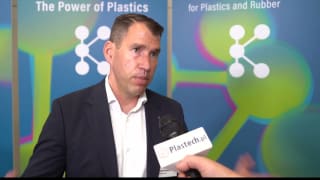
For highly technical parts the optimum mold configuration is paramount to produce high quality parts in robust processes. With the help of Sigmasoft Virtual Molding mold makers test their mold concepts upfront on a virtual injection molding machine. In this way, they identify the ideal mold configuration before machining the steel.
Finding the optimum configuration for injection molds
At Moulding Expo 2019 (May 21st to 24th, 2019, in Stuttgart, Germany) Sigma Engineering GmbH from Aachen, Germany, exhibits their Sigmasoft Virtual Molding technology. In hall 7 at booth 7E15 Sigma showcases how the software helps to analyze and evaluate injection molds and their tempering concepts from the early design stage. It supports the user in identifying the ideal combination of mold alloys and tempering layout. Thus, the software allows mold makers to built molds that produce good parts from the first trial on the machine.

In an example case for an automotive application the mold initially was planned with a common mold steel. To avoid costly iterations of the mold, the whole configuration - including all mold components and their respective alloys - was set-up in Sigmasoft. Working as a virtual injection molding machine the software calculated an initial heating-up phase as well as several injection cycles to reach a thermal steady state. The analysis of the thermal steady mold revealed hot spots in some of the mold cores (Fig. 1, left), where the temperature got up to 30 °C higher than in the rest of the cavity. To reach a more homogenous distribution, different possible solutions were discussed and evaluated with the help of Sigmasoft Virtual Molding.
Due to the overall configuration of the mold the preferred solution was to exchange the common mold steel with a high conductivity alloy instead of introducing additional cooling channels. Therefore, virtual trials were conducted with mold inserts out of CuBe B2 and Moldmax HH. As in the initial analysis, these virtual trials were calculated with a heating-up phase followed by several molding cycles to reach a thermal steady state. In the end, the temperature distribution on the cores with all three materials was compared. Both high conductivity alloys showed a significantly improved and more homogenous temperature distribution (Fig. 1, middle and right). As the achieved temperatures of both high conductivity alloys were in the same range, both provided a sufficient solution for avoiding the hot spots. Based on the simulation results, the mold could immediately be built with high conductivity cores to supply the base for a robust process.
Sigmasoft allows its users to easily test and evaluate their planned mold configuration before the mold is built. With its help they identify critical temperature behavior and test solutions to improve the mold and make the injection molding process more robust. Thus, they save costs and avoid iterations on the mold during the trial-and-error on the machine.
Source: Sigma



